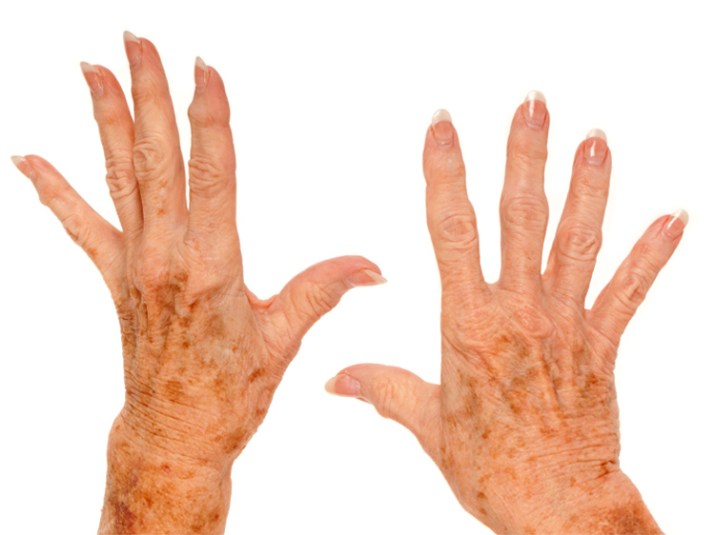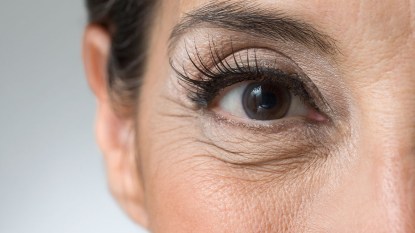What Are Those Dark Spots on Your Hands and Arms?

Liver spots are incredibly common in people over 40, but that doesn’t make seeing these marks on your skin any more pleasant. Nor does it make the name sound any more appealing. So what are these dark spots, anyway? And what the heck do they have to do with your liver? First off, let’s start with some good news: Experts say they are not dangerous to your health in any way and usually don’t require medical treatment.
A liver spot is simply a flat, brown or black mark that can appear on the skin in places that are exposed to the sun, according to Medline Plus. Liver spots develop as painless patches or areas of skin-color change most often on the backs of the hands, face, forearms, shoulders, and forehead. Sometimes called “age spots,” they can range from freckle size to about a 1/2 inch across reports the Mayo Clinic. They were once thought to be a sign of a malfunctioning liver (hence the name), but that has been proven false. They are actually completely benign and have absolutely nothing to do with your liver or liver function.
According to Harvard Medical School, liver spots are usually caused by collections of pigment that develop due to sun exposure. You can think of this darker pigment as a response to an injury on your skin, sort of like a scar sealing over a cut. Interestingly enough, liver spots can also be caused by bruising that leaves blood pigment behind. This is most likely to happen on areas of the body that have thin skin, so it’s no wonder so many liver spots pop up on the hands!
To prevent liver spots, the Mayo Clinic suggests avoiding the sun between 10 a.m. and 2 p.m., consistently using sunscreen with an SPF of at least 30, and wearing tightly woven clothing that covers your arms and legs when you do go outside. A broad-brimmed hat is also a smart (and stylish) way to protect yourself.
If you’re unhappy with the liver spots you already have, you have a few different options for removing them or at least lightening them. According to Cleveland Clinic, some liver spot treatments include prescription lightening creams, laser therapies, chemical peels, and freezing them through cryotherapy. Always talk to your dermatologist about any potential side effects before undergoing one of these procedures, especially if you have sensitive skin.
Over-the-counter treatments are also available in drugstores, including fade creams and lotions — ones that contain hydroquinone, glycolic acid, or kojic acid are probably your best bet. But how effective they are will depend on how dark your liver spots were from the get-go and how often you apply the cream. However, it’s worth keeping in mind that liver spots are totally harmless, so there’s no urgent need to get them removed if you don’t want to.
However, if your liver spot has a sudden change in appearance, you should have it checked out by a doctor stat. You can never be too careful when it comes to your health!
More From FIRST
What Are Those ‘Red Moles’ On Your Skin?
This Is the Soap Jackie Kennedy Relied On for Flawless Skin
10 Products for Eczema-Prone Skin That Will Literally Change Your Life













